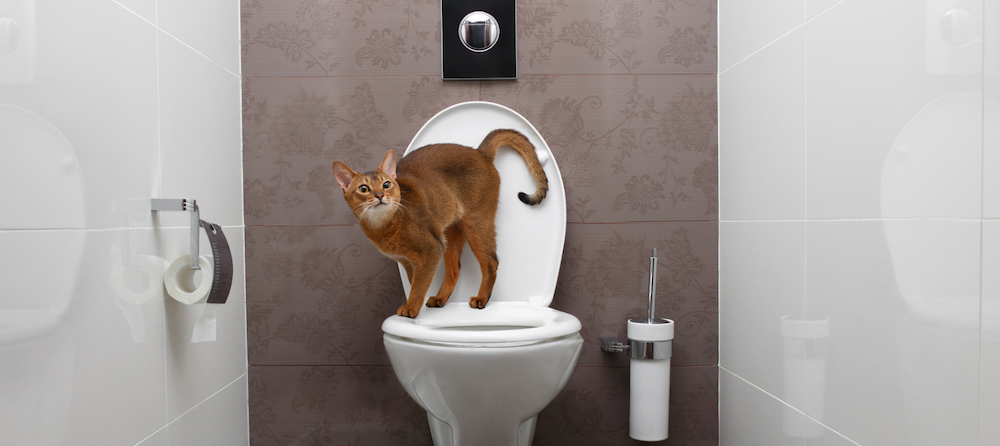Don't Flush Cat Poop Down Your Toilet - Maintain Your House's Pipe System
Don't Flush Cat Poop Down Your Toilet - Maintain Your House's Pipe System
Blog Article
How do you feel in relation to Don’t flush cat feces down the toilet?

Introduction
As feline owners, it's vital to bear in mind how we take care of our feline good friends' waste. While it may seem hassle-free to purge pet cat poop down the commode, this method can have destructive effects for both the environment and human wellness.
Environmental Impact
Purging cat poop presents hazardous virus and parasites into the water supply, posturing a substantial risk to water communities. These impurities can negatively impact marine life and concession water quality.
Wellness Risks
In addition to environmental worries, flushing feline waste can also position wellness dangers to people. Pet cat feces may include Toxoplasma gondii, a bloodsucker that can create toxoplasmosis-- a possibly severe disease, especially for expectant females and individuals with weakened body immune systems.
Alternatives to Flushing
The good news is, there are safer and much more liable means to deal with feline poop. Think about the complying with choices:
1. Scoop and Dispose in Trash
One of the most common method of getting rid of feline poop is to scoop it right into an eco-friendly bag and toss it in the garbage. Make certain to make use of a committed clutter inside story and dispose of the waste quickly.
2. Use Biodegradable Litter
Select eco-friendly pet cat trash made from products such as corn or wheat. These trashes are environmentally friendly and can be safely gotten rid of in the trash.
3. Bury in the Yard
If you have a lawn, think about hiding feline waste in an assigned area away from veggie yards and water resources. Make sure to dig deep sufficient to avoid contamination of groundwater.
4. Install a Pet Waste Disposal System
Purchase an animal waste disposal system especially made for feline waste. These systems utilize enzymes to break down the waste, decreasing odor and ecological influence.
Final thought
Responsible pet ownership expands past offering food and shelter-- it additionally includes appropriate waste management. By avoiding flushing cat poop down the commode and opting for different disposal techniques, we can reduce our ecological impact and safeguard human wellness.
Why Can’t I Flush Cat Poop?
It Spreads a Parasite
Cats are frequently infected with a parasite called toxoplasma gondii. The parasite causes an infection called toxoplasmosis. It is usually harmless to cats. The parasite only uses cat poop as a host for its eggs. Otherwise, the cat’s immune system usually keeps the infection at low enough levels to maintain its own health. But it does not stop the develop of eggs. These eggs are tiny and surprisingly tough. They may survive for a year before they begin to grow. But that’s the problem.
Our wastewater system is not designed to deal with toxoplasmosis eggs. Instead, most eggs will flush from your toilet into sewers and wastewater management plants. After the sewage is treated for many other harmful things in it, it is typically released into local rivers, lakes, or oceans. Here, the toxoplasmosis eggs can find new hosts, including starfish, crabs, otters, and many other wildlife. For many, this is a significant risk to their health. Toxoplasmosis can also end up infecting water sources that are important for agriculture, which means our deer, pigs, and sheep can get infected too.
Is There Risk to Humans?
There can be a risk to human life from flushing cat poop down the toilet. If you do so, the parasites from your cat’s poop can end up in shellfish, game animals, or livestock. If this meat is then served raw or undercooked, the people who eat it can get sick.
In fact, according to the CDC, 40 million people in the United States are infected with toxoplasma gondii. They get it from exposure to infected seafood, or from some kind of cat poop contamination, like drinking from a stream that is contaminated or touching anything that has come into contact with cat poop. That includes just cleaning a cat litter box.
Most people who get infected with these parasites will not develop any symptoms. However, for pregnant women or for those with compromised immune systems, the parasite can cause severe health problems.
How to Handle Cat Poop
The best way to handle cat poop is actually to clean the box more often. The eggs that the parasite sheds will not become active until one to five days after the cat poops. That means that if you clean daily, you’re much less likely to come into direct contact with infectious eggs.
That said, always dispose of cat poop in the garbage and not down the toilet. Wash your hands before and after you clean the litter box, and bring the bag of poop right outside to your garbage bins.
https://trenchlesssolutionsusa.com/why-cant-i-flush-cat-poop/

I have been very enthusiastic about Can You Flush Cat Poop Down The Toilet? and I hope you liked the entire entry. Don't hesitate to take a moment to distribute this content if you enjoyed it. Thank you for going through it.
Details Here Report this page